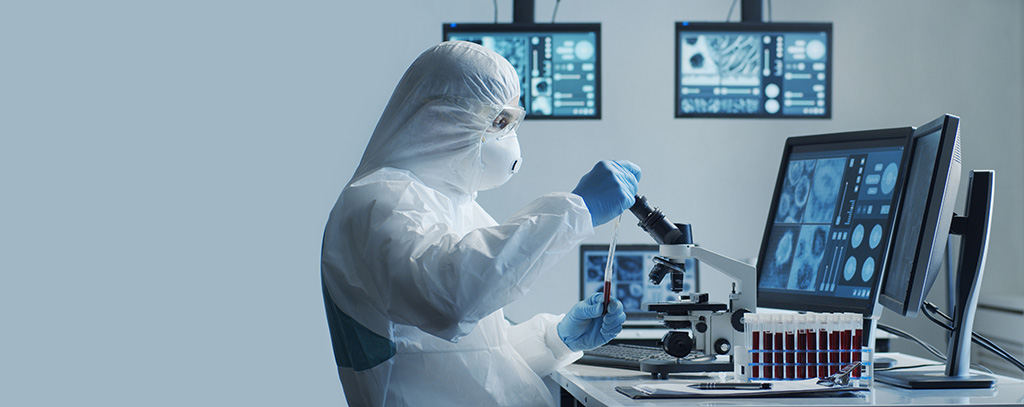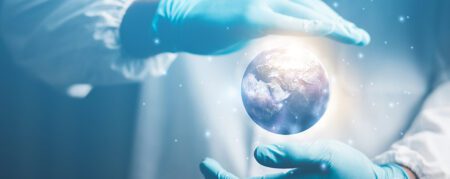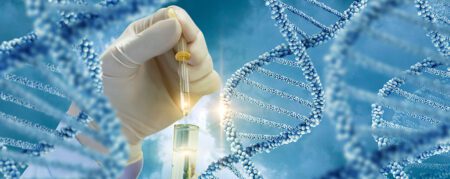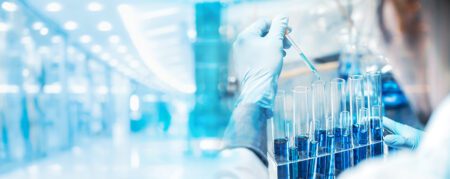


Selecting Oral Drug Testing Supplies for Employers
May 3, 2023


Company Drug Test: Streamlining Pre-Employment Screening
May 4, 2023Many companies are curious to know more about Saliva Drug Test FAQs in relation to drug testing in the workplace. As an option to standard urine tests, saliva drug tests present a few benefits and can be utilized for various scenarios like pre-employment screening or post-accident testing. In this blog post, we will delve into the world of Saliva Drug Test FAQ and provide you with valuable information on how these tests work, their accuracy, and what drugs they can detect.
We'll begin by discussing what exactly a saliva drug test is and how it works to detect recent drug use. We'll then examine the accuracy of saliva drug tests and factors that may influence their dependability. Additionally, we'll discuss the time frame for receiving results from a saliva drug test.
Furthermore, our exploration of Saliva Drug Test FAQ will cover which types of drugs can be detected using this method as well as any potential implications if an unfavorable result is received. By gaining a comprehensive understanding of saliva drug testing procedures and best practices, you will be better equipped to make informed decisions when implementing or updating your company's drug testing program.
Saliva Drug Test Basics
As a company looking to maintain a safe and productive work environment, it's essential to understand the fundamentals of saliva drug tests. These tests are popular for detecting recent substance use within 24-48 hours, providing instant results that can help create a safer workplace. In this section, we will discuss how saliva drug tests work and their advantages over other types of drug testing methods.
How do saliva drug tests work?
Saliva drug tests, also known as mouth swab or oral fluid testing, involve collecting an individual's saliva sample using a specialized collection device. The donor's mouth is swabbed with an absorbent pad or sponge that collects the oral fluids containing traces of drugs or their metabolites. Once collected, the specimen is then analyzed either on-site using instant oral fluid testing kits or sent off to a lab for further analysis.
The presence of specific drugs in the oral fluids indicates recent use since most substances enter the bloodstream shortly after consumption and are detectable in saliva within minutes to hours. This makes these tests ideal for identifying individuals who may be under the influence during working hours.
Advantages of using oral fluid testing
- Ease of administration: Saliva-based screenings require no special facilities like those needed for urine drug testing; they can be conducted quickly and discreetly at any location by trained personnel without causing discomfort or embarrassment to donors.
- Tamper-resistant: Unlike urine samples which can be easily adulterated through dilution or substitution, it is more challenging to tamper with oral fluid specimens. The collection process is directly observed, reducing the likelihood of cheating.
- Instant results: With instant oral fluid testing kits, preliminary results can be obtained within minutes, allowing for swift decision-making in various workplace situations such as post-accident investigations or random screenings.
- Detection of recent drug use: Saliva tests have a shorter detection window compared to urine tests, making them more effective at identifying recent substance use and impairment on the job.
In summary, saliva drug tests offer several advantages over other methods like urine testing when it comes to ease of administration and detecting recent drug use. These factors make them an attractive option for companies looking to implement a comprehensive drug-free workplace program. They present an expeditious and precise way of ascertaining drugs in a person's system, thus rendering them practical for employers. Moving on from the basics of saliva testing, let us now explore detection windows and accuracy associated with these tests.
Detection Window and Accuracy
Understanding the detection window and accuracy levels associated with saliva-based screenings is crucial for companies that use saliva drug tests as part of their workplace safety measures. While these tests have a shorter detection window compared to urine drug tests, they offer an earlier opportunity to identify recent substance use with high accuracy when proper collection techniques are followed.
Comparing Detection Windows Between Test Types
- Saliva Drug Tests: Oral fluid testing typically detects drugs within 24-48 hours after consumption, making it ideal for identifying recent drug usage in various testing situations ranging from pre-employment screening to post-accident investigations.
- Urine Drug Tests: Urine testing has a longer detection window than saliva tests, often able to detect substances up to several days or even weeks after ingestion. However, this extended timeframe may not be suitable for all scenarios where employers need immediate results on recent substance intake.
Factors Affecting Test Accuracy
The accuracy of oral fluids drug test depends on multiple factors such as the donor's mouth condition, specimen handling procedures, and adherence to manufacturer guidelines. Here are some key aspects affecting the reliability of test outcomes:
- Mouth Conditions: An individual's oral hygiene can impact the concentration of drugs present in their saliva. For instance, dry mouth or dehydration might lead to false-negative results due to reduced amounts of available oral fluids during sample collection.
- Sample Collection: Proper handling of oral fluid specimens is essential to avoid contamination or dilution, which can affect test results. Following the manufacturer's instructions and using appropriate collection devices are crucial steps in ensuring accurate outcomes.
- Test Kit Quality: Employers should invest in high-quality instant oral fluid testing kits from reputable suppliers like Halux Diagnostic to ensure reliable results. Low-quality tests may not provide consistent findings, leading to potential false negatives or positives.
In conclusion, saliva drug tests offer a shorter detection window than urine drug tests but provide an earlier opportunity for detecting recent substance use with high accuracy when proper collection techniques are followed. By understanding these factors and investing in quality testing supplies, companies can make informed decisions about their drug testing program and maintain a drug-free workplace.
Detection window and accuracy are important factors to consider when selecting the right drug test for your organization. With that in mind, let's explore what drugs can be detected with oral fluid testing.
Common Drugs Detected in Oral Fluid Testing
In this section, we will explore the range of substances typically tested for in oral fluid specimens. Laboratories can screen for up to 14 drugs at once depending on the panel chosen by employers or organizations implementing them into their screening process, including amphetamines, methamphetamines, cocaine, marijuana (THC), opiates (including oxycodone), phencyclidine (PCP), benzodiazepines (BZO) and barbiturates among others.
Most Frequently Tested Substances in Mouth Swab Screenings
The following list includes some of the most common drugs detected through oral fluids drug testing:
- Marijuana (THC)
- Cocaine
- Opiates such as heroin and morphine
- Oxycodone and other prescription opioids
- Amphetamines and Methamphetamine
- Benzodiazepines like Valium or Xanax
- Phencyclidine (PCP)
- Barbiturates
Customizing Panels Based on Specific Needs
In addition to these standard tests, companies may choose to customize their saliva test panels according to specific requirements. For example, a transportation company might focus more heavily on detecting alcohol consumption due to its potential impact on driver safety. Similarly, an organization dealing with sensitive information may prioritize identifying illicit stimulant use that could affect employee decision-making.
To determine which panel best suits your organization's needs, consider factors such as industry regulations, potential risks associated with substance abuse, and the prevalence of specific drugs within your workforce.
Applications in Workplace Drug Testing Programs
Discover various applications where saliva drug tests play an essential role in creating a more productive workplace by reducing accidents, fatalities, tardiness, absenteeism, as well as healthcare costs associated with substance abuse. Employers find these kits easy to conduct across different situations ranging from pre-hire assessments to post-event investigations.
Pre-Employment Screening
Saliva drug tests are often used during pre-employment drug screening processes to ensure that potential hires do not have recent drug use history that could negatively impact their job performance or safety on the job. By identifying candidates who may be at risk for substance abuse issues before they join the team, employers can help maintain a safe and productive work environment.
Random Testing
In addition to pre-employment screenings, companies may also implement random testing programs. These unannounced checks serve as a deterrent against ongoing drug use among employees, ensuring compliance with company policies and promoting overall workplace safety.
Post-Accident Investigations
Mouth swab drug testing is frequently utilized following workplace accidents or incidents. In the aftermath of an accident or incident, assessing whether drugs had a role can be beneficial when it comes to allocating responsibility and implementing corrective steps.
Oral fluid analysis is a convenient approach to recognize typical drugs rapidly, and it can be tailored depending on specific requirements. When applied within workplace drug testing programs, oral fluid tests provide reliable results for pre-employment screening, random testing, and post-accident investigations.
Applications in Workplace Drug Testing Programs
Saliva drug tests play an essential role in creating a more productive and safer workplace environment. By utilizing them to reduce the frequency of mishaps, fatalities, tardiness, non-attendance due to illness and the associated healthcare costs related to substance abuse, employers can guarantee their employees' well-being. These saliva drug tests are easy to conduct across various testing situations ranging from pre-hire assessments to post-event investigations.
Pre-Employment Screening
Pre-employment drug screening is a crucial step in hiring new employees for any organization committed to maintaining a drug-free workplace. Saliva tests offer several advantages over traditional urine testing methods during this process. For instance:
- The non-invasive nature of mouth swab collection reduces discomfort for donors.
- The risk of tampering or adulteration is minimized due to direct observation during sample collection.
- Faster results enable quicker decision-making when selecting candidates.
Random Testing
In addition to pre-employment screening, saliva-based screenings can be utilized effectively for conducting unannounced random drug testing within the workforce. The ease-of-use and rapid turnaround time provided by instant oral fluid testing kits make them ideal for implementing surprise checks on employees without significantly disrupting daily operations.
Post-Accident Investigations
Suspected substance use following an accident at work may warrant immediate investigation using saliva drug tests. The short detection window of oral fluid testing is particularly useful in such cases, as it helps employers determine whether recent drug use may have contributed to the incident. In post-accident testing situations, quick and accurate results are crucial for taking appropriate corrective actions and ensuring workplace safety.
In conclusion, saliva drug tests offer a versatile solution for various workplace drug testing needs. By integrating these screenings into their overall drug testing program, employers can create a safer work environment while minimizing potential risks associated with substance abuse among employees.
Employers can employ drug testing programs to create a secure and healthy workplace, while safeguarding the rights of their staff. Proper collection techniques are necessary in order to ensure valid results and avoid invalid outcomes; this will be discussed further in the next heading.
Proper Collection Techniques & Avoiding Invalid Results
Ensure accurate results by following proper collection techniques for saliva drug tests. Proper handling of oral fluid specimens is crucial to avoid invalid test outcomes and ensure the reliability of negative drug test findings. This section will go over the steps to be taken when obtaining an oral fluid sample, as well as potential mistakes that could lead to invalid results.
Steps in Collecting an Oral Fluid Sample
- Prepare the donor: Ask the donor to remove any food or gum from their mouth. They should also refrain from drinking or smoking for at least 10 minutes before providing a sample.
- Select a testing device: Choose an appropriate instant oral fluid testing kit designed specifically for detecting drugs in saliva samples.
- Instruct the donor: Provide clear instructions on how to collect saliva using the swab provided with your chosen testing kit. The donor should gently rub it against their cheeks, gums, and under their tongue until it becomes saturated with saliva.
- Safely secure the specimen: Once collected, insert the swab into its designated container according to manufacturer guidelines. Ensure that it's properly sealed before sending it off for analysis if required.
Common Errors Leading to Invalid Results
Avoid these mistakes when conducting mouth swab drug testing procedures as they may compromise test accuracy or produce false-negative results:
- Failing to instruct donors on proper pre-test preparations such as avoiding eating, drinking, or smoking prior to providing a sample;
- Using an expired or damaged testing kit;
- Not collecting enough saliva on the swab, which may result in insufficient sample volume for accurate analysis;
- Mishandling or contaminating the oral fluid specimen during collection and storage.
By following the guidelines and avoiding errors, your organization's drug testing program can provide reliable results that will help identify those under the influence of drugs to maintain a safe working environment. This will help maintain a safe and productive workplace environment by accurately identifying individuals who may be under the influence of drugs.
It is important to remember the proper collection techniques and avoid invalid results in order to ensure accurate drug testing outcomes. To further understand test results, it is beneficial to learn about confirmatory laboratory testing procedures.
Interpreting Test Results & Lab Confirmation
Understanding how to interpret the initial results from instant oral fluid testing kits and when it's necessary to send samples for lab confirmation is crucial in maintaining a reliable drug-free workplace. In this section, we will discuss reading preliminary mouth swab drug testing outcomes and confirmatory laboratory testing procedures.
Reading Preliminary Mouth Swab Drug Testing Outcomes
The instant oral fluid tests provide rapid results that can be easily interpreted on-site. The presence or absence of colored lines indicates either a negative or positive result for each specific drug type:
- Negative: Two colored lines appear - one in the control region (C) and another in the test region (T). This means that no recent drug use has been detected.
- Positive: Only one colored line appears in the control region (C), with no line appearing in the test region (T). This suggests recent substance use, but further lab analysis is needed for confirmation.
- Invalid: No line appears at all or only a single line shows up in the test region (T). An invalid result may indicate improper handling of specimens or issues with the testing kit itself. Retesting should be conducted using a new device.
Confirmatory Laboratory Testing Procedures
In cases where an instant saliva test returns a non-negative outcome, it's essential to send these samples to an accredited testing facility for confirmatory analysis. Lab testing uses advanced techniques like Gas Chromatography-Mass Spectrometry (GC-MS) or Liquid Chromatography-Tandem Mass Spectrometry (LC-MS/MS) to provide definitive results:
- Positive Confirmation: The lab results will either confirm the initial positive result, indicating recent drug use, or refute it due to false positives caused by certain medications or other factors.
- Negative Confirmation: If the lab analysis contradicts the preliminary positive outcome and returns a negative result, this may suggest that an error occurred during on-site testing. In such cases, further investigation is needed before making any workplace decisions based on test outcomes.
Incorporating both instant oral fluid tests and laboratory confirmation into your company's drug testing program ensures accurate decision-making while maintaining compliance with applicable laws and regulations. By understanding how to interpret saliva drug test results properly and when to seek additional verification through lab analysis, employers can effectively promote a safer work environment for all employees.
FAQs in Relation to Saliva Drug Test
What Shows Up on a Saliva Drug Test?
Saliva drug tests can detect various substances, including marijuana, cocaine, amphetamines, methamphetamine, opioids (such as oxycodone and hydrocodone), and phencyclidine (PCP). The specific drugs detected depend on the test panel used. Some panels may also include additional substances like benzodiazepines or barbiturates.
Can a Saliva Drug Test Be Inaccurate?
A saliva drug test can occasionally produce false positives or negatives due to factors such as cross-reactivity with medications or improper collection techniques. However, confirmatory laboratory testing using methods like gas chromatography-mass spectrometry (GC-MS) significantly reduces the chances of inaccurate results.
What Is the False Positive Rate for Mouth Swab Drug Tests?
The false-positive rate for mouth swab drug tests varies depending on the substance being tested and the quality of the testing kit. Generally speaking, high-quality oral fluid testing kits have low false-positive rates.
What Is the Proof Intercept Saliva Test?
The Proof Intercept Saliva Test, developed by Alere Toxicology Services Inc., is an oral fluid-based screening method that detects multiple drugs in human saliva samples. It uses advanced technology to provide rapid preliminary results at point-of-collection sites while maintaining accuracy comparable to traditional urine-based screenings.
Conclusion
Overall, this Saliva Drug Test FAQ has provided a comprehensive overview of what saliva drug tests are, how they work, and what to expect from the testing process. From understanding the types of drugs that can be detected to knowing what steps to take after receiving an unfavorable result, this guide covers all the essential information needed for anyone considering using saliva drug tests in their workplace.
If you're looking for high-quality and reliable saliva drug testing supplies, Halux Diagnostic is here to help. Our wide range of products ensures accurate results every time while also providing affordable pricing options. For more information on our products and services, reach out to us or explore our website.
Ready to get started with your next round of drug testing? Check out Halux Diagnostic's selection of top-rated saliva drug test kits today!





